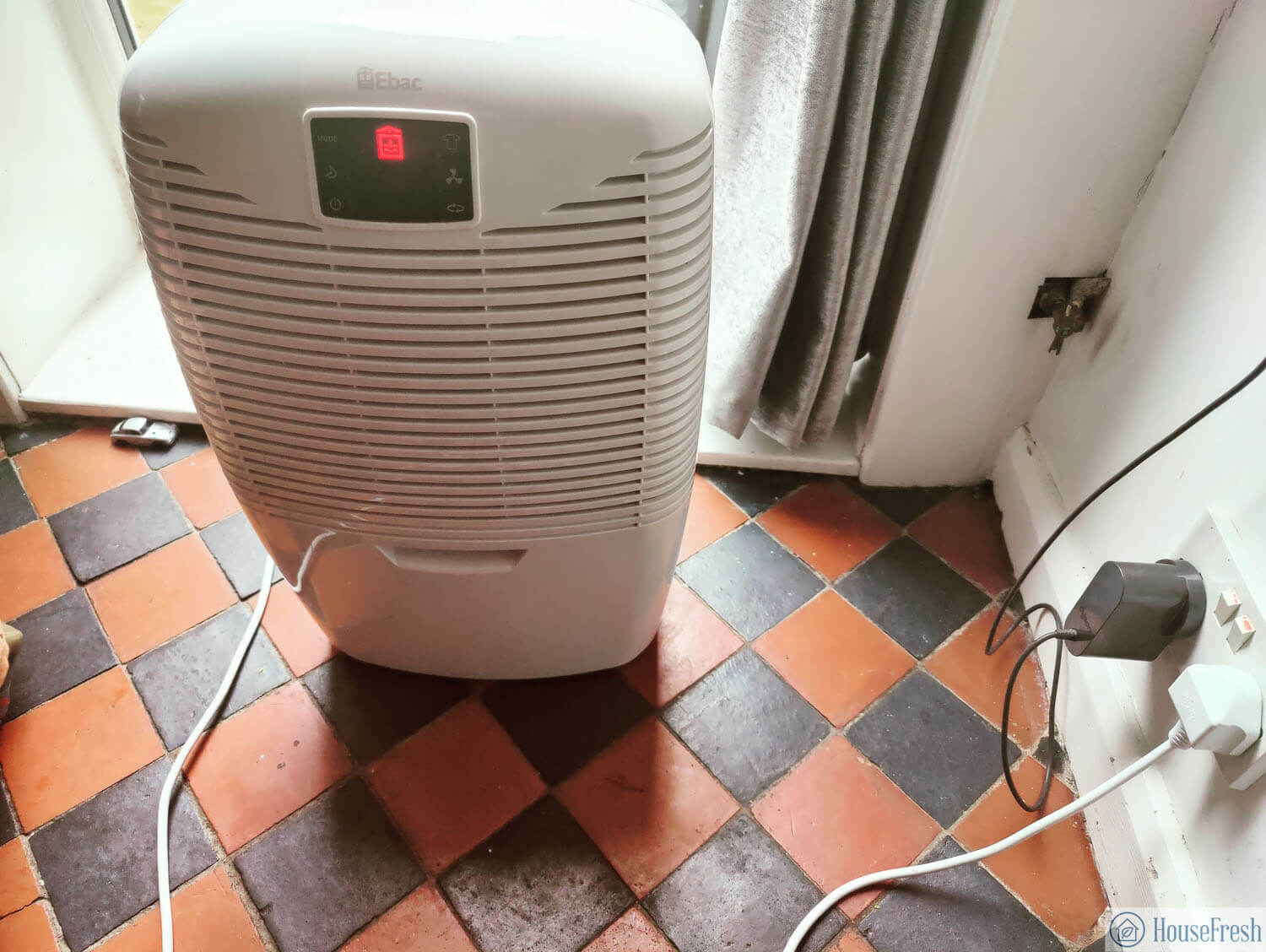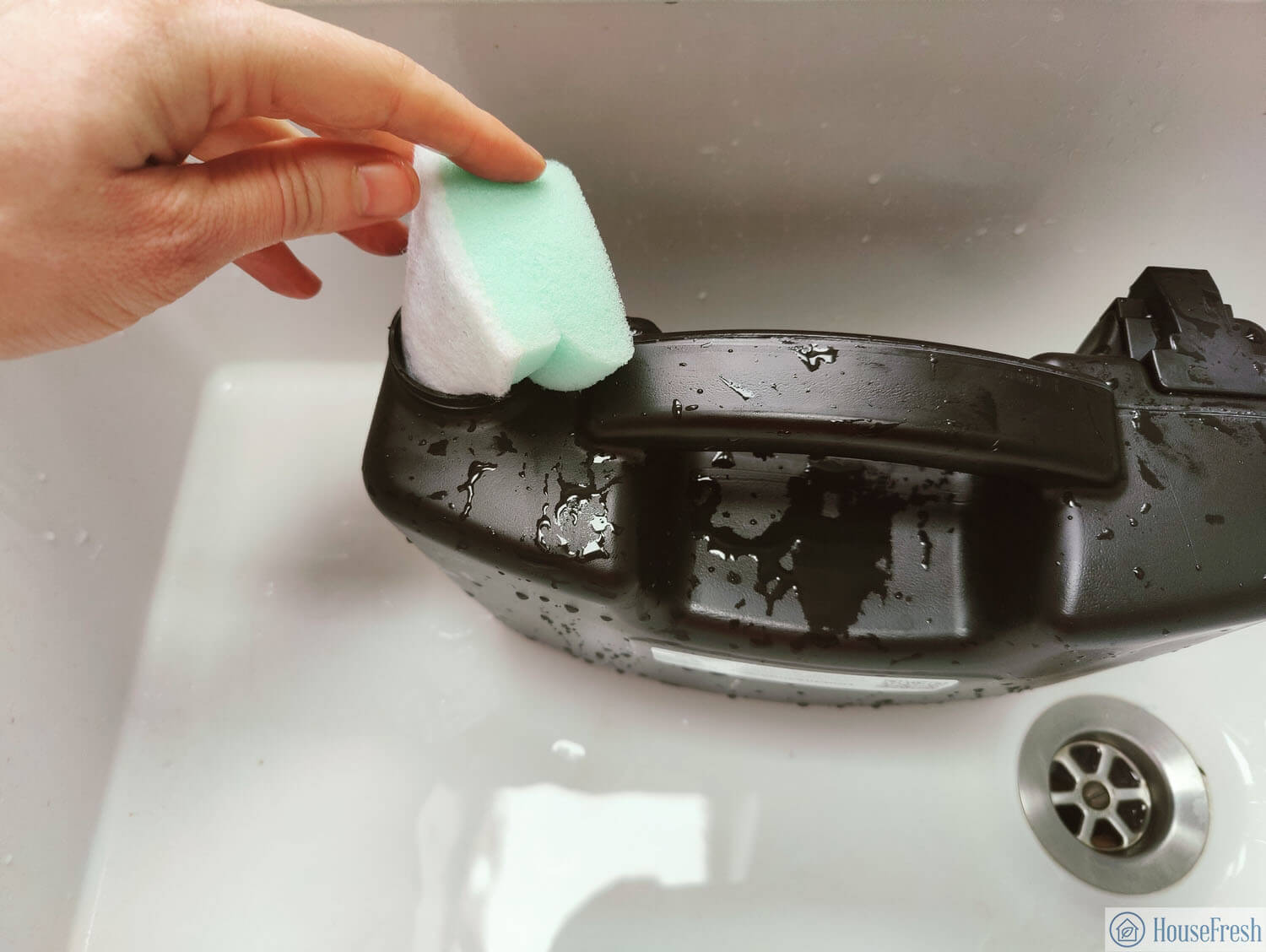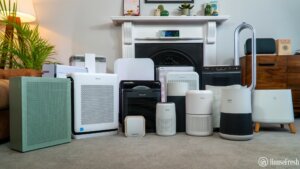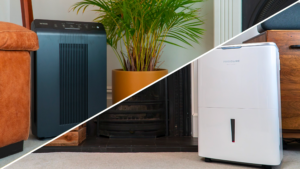In this comprehensive photo guide, we will show you how to clean your dehumidifier so you can avoid mold or dust affecting your long-term unit performance.
– Gloves
– A cloth (microfiber is best)
– Liquid soap
– Soft bristle brush (such as a toothbrush)
– Vacuum cleaner
– Anti-bacterial cleaning solution or distilled white vinegar for tough stains or mold buildups
The following step-by-step step guide will show you a simple solution to keeping your dehumidifier clean. We’ve used the Ebac 3850e to illustrate each step, but we advise finding your own model’s manual to show you how to access each component correctly.
1. Turn off and unplug your dehumidifier
First and foremost, it’s imperative you turn off the machine and disconnect it from the power source. When cleaning any electrical unit, always think safety first!

2. Wipe down the outside
Once disconnected from the mains’ power, you can begin the cleaning process.
First things first, begin by wiping down the exterior of the dehumidifier. Use a damp cloth to clean any dirt or dust from the unit.
Don’t spray any liquids directly onto the dehumidifier. If an additional cleaning solution is needed to remove any stubborn grime or stains, apply a little liquid soap to your cloth and target the specific areas.
3. Clean the water tank thoroughly
While you will no doubt empty the water reservoir as and when it’s required, it’s important to get into the habit of emptying and cleaning this tank with hot soapy water at least once a week while the dehumidifier is in use.
As this compartment stores the extracted moisture, it will be prone to mold and mildew if the water is left to go stagnant. After emptying the tank, simply submerge in hot, soapy water and give it a gentle scrub.

If the tank has any mineral or hard water deposits, using distilled white vinegar should help budge any residue with minimal effort. You may want to use a sterilizing or anti-bacterial solution on the tank if you’ve neglected to clean it for a while.
4. Rinse the dehumidifier filter
The air filter is the unsung hero of your dehumidifier. By capturing any dirt, dust, or mold spores as the air passes through, the extracted water is far less likely to stagnate. However, this cements the need to break down and clean each separate component, if the filter becomes clogged, your dehumidifier will soon lose efficacy. Mold and grime will spread and your unit will ultimately break.
Start by rinsing the filter then allow it to soak in hot, soapy water for a few minutes. Gently clean the filter with a soft bristle brush to dislodge any debris and grime, then set aside to dry.
Your dehumidifier may also have a bucket filter, this is usually a thimble-sized filter above the water reservoir. Rinse, soak, and scrub as above and allow to dry.
5. Wipe the fan blades
If accessible, wipe down the fan blades with a microfiber cloth to remove any dust or debris. Make sure the unit is 100% turned off and unplugged before doing this!
6. Vacuum the inside
While the water reservoir and filter are drying, carefully vacuum the interior of your unit using the crevice attachment. This will collect any remaining dust or debris.
Once everything has thoroughly dried, you can then reassemble and use your dehumidifier.
By following these simple steps, your dehumidifier will be as good as new. While it may seem like another chore to add to the list, by following this guide you will not only keep your dehumidifier functioning at its optimum for years to come but can rest assured that mold and mildew spores will be kept at bay and your air quality will be of a healthier standard.
How to know when your dehumidifier needs cleaning
Now I know what you’re thinking, do I really need to clean my dehumidifier? After all, you might rinse the water reservoir and wipe any dust from the exterior of the machine from time to time. Isn’t that enough?
While that may be a good start, in order to clean a dehumidifier properly, you need to disassemble and thoroughly clean each of the key components. If this is your first time cleaning a dehumidifier after a prolonged period of use, you may be surprised to see the amount of grime, dust, and even mold accumulating inside.
If we consider how unchecked condensation in your bathroom can quickly turn to mold, so can the moisture extracted by your dehumidifier. Without opening it up and thoroughly cleaning each part, the warm and moist environment will prove to be a fertile breeding ground for mold and mildew spores.
Preventing mold and mildew from spreading is often the primary reason people invest in a dehumidifier. Without cleaning your unit, you can expect this very reason to only get worse.
A dirty dehumidifier will quickly lose efficiency, ceasing to extract moisture from the air which will allow mold to thrive in your home. Without being curtailed, mold will besmirch your home, ruin your possessions, and can seriously affect your health.
In order to keep on top of cleaning and ensure your dehumidifier is performing at its best, we recommend giving your unit a deep clean once every two weeks. Of course, this is with normal day-to-day usage, so if your unit is working overtime, say after a flood, then cleaning and maintenance will have to be carried out more frequently.
Remember to empty the water reservoir every few days to avoid the liquid turning stagnant. It’s best to quickly clean the reservoir each time you empty it to reduce the risk of mold and mildew developing.







